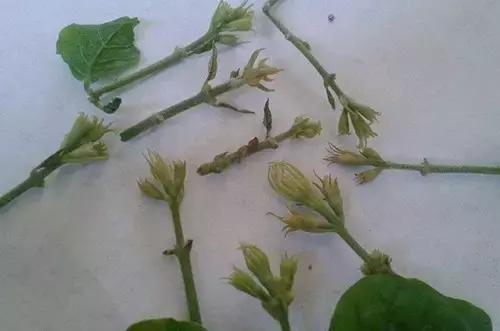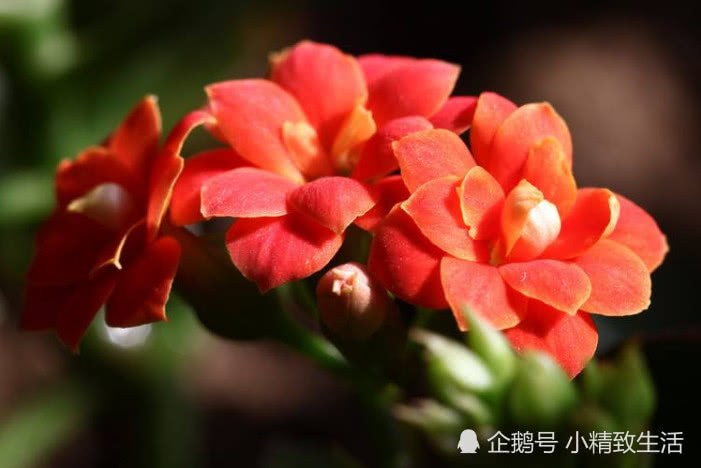September or another year.

It is mid-September, the autumn tiger is gradually receding, the temperature is pleasant, the sun is fading away from the summer, and many flowers have entered the best cutting period in autumn. Flower friends who want to cut these flowers should begin to prepare.
Jasmine
1. The jasmine should be pruned properly in autumn. after pruning, strong branches are selected as cuttings, and one end of the cuttage is cut into an oblique incision.
2. Leave two leaves and cut off half of the leaves to reduce the consumption of water and nutrients.
3. Prepare the sterilized river sand, water and moist in advance, and insert the cuttings into the sand.
4. Put it in a ventilated shade, and it can sprout in January or so.
Rose
1. Select the flower branch of the healthy unsprouted flower bud, cut the upper part from the top of the axillary bud, cut obliquely into the shape of a horseshoe, and leave three centimeters long as cuttings.
2. Prepare clean river sand or vermiculite, insert rose cuttings and water thoroughly.
3. Place in a shaded and ventilated place, observe the soil humidity in the morning, middle and evening, and keep the soil moist by spraying water.
4. Keep the temperature from 20 to 28 degrees for about two weeks, then take root and then sprout new leaves.
5. Move to a position with sufficient light, maintain normally until the root color turns brown, and then transplant.
Hydrangea
1. Choose the sturdy hydrangea branches in that year and cut off about 15 centimeters.
2. Find a more robust bud point, cut the horseshoe shape at about four centimeters below, cut flat above the bud point, not too high or too close to the bud point.
3. Remove the leaves, leave two pieces, and then cut off 1/2 of the leaves to reduce evaporation and consumption.
4. Insert the cuttings into the prepared vermiculite or peat soil with the nodes exposed.
5. Place it in a shaded and ventilated place, maintain a temperature of 25 to 30 degrees, and spray to moisturize.
6. Generally, it can take root in about 20 days, and the root can be transplanted after a month.
Gardenia
1. Choose semi-lignified sturdy branches as cuttings, retain axillary buds, leave one or two leaves, and cut off some leaves.
2. Insert the cuttings into the prepared river sand or other seedling media.
3. Put it in a shady and ventilated place and keep the temperature about 20 degrees. After half a month to January, the cuttings begin to take root.
4. Wait for the root to be stronger, grow new leaves, transplant, and maintain normally.
Diaolan peony
1. Cut off mature and robust branches, about 10 cm.
2. Insert cuttings into clean river sand or peat soil or vermiculite medium.
3. Place it in a cool and ventilated position and keep it moist by watering.
4. Wait until the paper gradually upright and harden, indicating cuttings and rooting, waiting for the new plant to be stronger, then it can be transplanted.
Make a fortune tree
1. The rich tree cuttings should choose the strong branches of the year, cut off 10-15 cm, retain the bud point, the lower incision is horseshoe-shaped, and the upper incision plane.
2. Remove the excess leaves, the remaining two old leaves or the new leaves at the top. If the old leaves are too large, you can cut off half of them to reduce consumption.
3. Insert the cuttings into the ready feeling sand, place them in a cool and ventilated place, and water them to keep them moist.
4. In about 20 to 30 days, the rich tree can take root, and when the roots are stable and strong and the seedlings are energetic, they can be transplanted.
- Prev

One branch or even one leaf can grow a new pot of longevity flowers and no longer have to go to the flower market.
There is a saying in the flower circle that "there is meat and longevity", in which "meat" refers to succulent plants, and "longevity" refers to longevity flowers. Of course, longevity flowers are also a kind of succulent plants, so we don't have to go through these sayings.
- Next

Those who have hydroponic plants at home must pay attention to this.
Many flower friends have hydroponic plants in their homes, some green pineapple and some other plants. But they don't know that hydroponic plants should change water and wash their roots. So, why on earth do you want to change the water to wash its roots? We all know the oxygen.
Related
- Wuhan Hospital Iron Tree Blooming Result Was Instantly Frightened by the Gardener Master
- Which variety of camellia is the most fragrant and best? Which one do you like best?
- What is the small blue coat, the breeding methods and matters needing attention of the succulent plant
- Dormancy time and maintenance management of succulent plants during dormancy
- Minas succulent how to raise, Minas succulent plant pictures
- What are the varieties of winter succulent plants
- How to raise succulent plants in twelve rolls? let's take a look at some experience of breeding twelve rolls.
- Attention should be paid to water control for succulent plants during dormant period (winter and summer)
- Watering experience of twelve rolls of succulent plants
- Techniques for fertilizing succulent plants. An article will let you know how to fertilize succulent plants.

